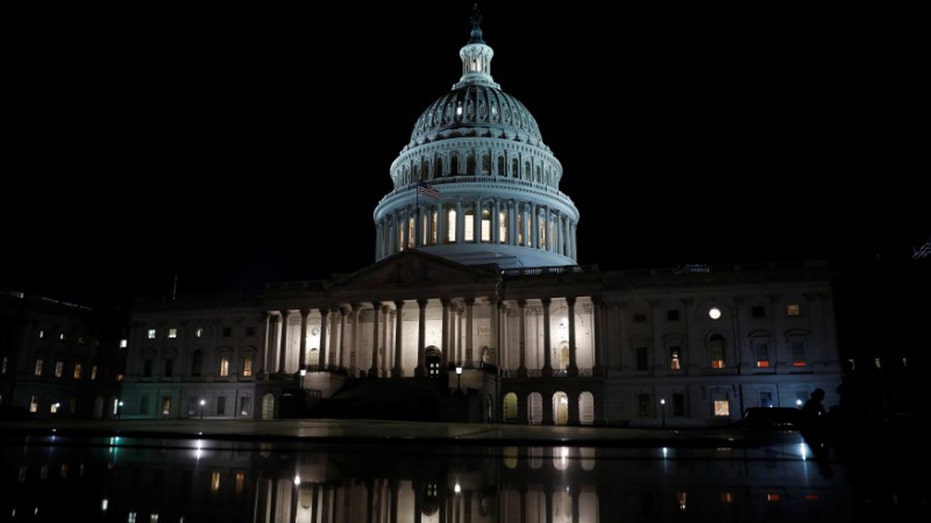Bipartisan retirement bill would extend 401(k) withdrawals, boost auto-enrollment in saving plans
The legislation builds upon a 2019 landmark retirement bill
Rubio on bill to protect US retirement funds from Russia investments
Sen. Marco Rubio, R-Fla. is taking legislative action to protect Americans that unknowingly have money tied up in the Russian markets.
A long-stalled bill intended to bolster Americans' retirement savings is finally moving its way through Congress.
The House overwhelmingly passed the Securing a Strong Retirement Act on Tuesday with a bipartisan vote of 414-5. The legislation now heads to the Senate.
WHERE ARE SURGING CONSUMER PRICES HITTING AMERICANS THE HARDEST?
"Oftentimes in this chamber, you will hear the phrase ‘transformative,’" House Ways and Means Committee Chairman Richard Neal, D-Mass., said on Tuesday as the bill neared passage. "Sometimes it’s hyperbolic but on this occasion, this is transformative legislation."
Although the tax-writing Ways and Means Committee unanimously passed the bill nearly one year ago, it has since languished as lawmakers debated a different retirement proposal that Democrats hoped to include in the now-defunct Build Back Better plan.

The U.S. Capitol in Washington on July 27, 2017. (Reuters/Aaron P. Bernstein / Reuters Photos)
The legislation, which builds on a landmark 2019 retirement bill, aims to further expand Americans' ability to save for retirement and increase their ability to do so.
It includes a number of retirement reforms, including expanding auto-enrollment for saving plans, providing assistance to individuals with student loan debt, assisting businesses in providing more retirement savings options and raising the age for required minimum distributions to tax deferred retirement accounts like 401(k)s.
INFLATION TOPS AMERICANS' BIGGEST ECONOMIC CONCERNS, GALLUP SURVEY SHOWS
One provision in the second Secure Act would require employers to automatically enroll eligible workers in 401(k) plans starting at 3% of their salary. That would gradually increase until the worker is contributing 10% of gross pay. Employees would have the option to opt out or select a different contribution amount, while businesses with fewer than 10 employees or that are less than three years old would be exempt from the law.
The bill would also increase how much individuals can contribute to their savings accounts as they get closer to retiring: For instance, individuals age 62, 63 and 64 could make catch-up contributions of $10,000, rather than the current $6,500.
Another key measure included in the bill would increase the starting age for required minimum distributions – the amount that a retirement plan account owner must withdraw annually beginning when they reach 72 – to 73 in 2022, 74 in 2029 and 75 by 2032.

House Ways and Means Committee Chairman Richard Neal presides over a markup hearing on Sept. 9 2021. (AP / AP Newsroom)
Student loan borrowers would also benefit from the legislation, which would allow employers to contribute to workers' retirement accounts when those employees make student loan payments. For instance, if you put $100 toward your student loan debt, your company could "match" that and donate $100 to your 401(k).
One other notable change the legislation would make is providing an option for employer matching contributions to be made into a Roth IRA, rather than a 401(k).
It's unclear how the Senate plans to handle the second Secure Act, as some senators are working on their own retirement legislation.
GET FOX BUSINESS ON THE GO BY CLICKING HERE
During a Senate Health, Education, Labor and Pensions Committee hearing on retirement savings Tuesday morning, panel chair Patty Murray, D-Wash., said she is working with ranking member Sen. Richard Burr, R-N.C., to assemble and move a retirement package "later this spring," according to Roll Call.
"I hope our discussion today will inform and improve these efforts and our Democratic and Republican colleagues will continue to bring forward ideas over the next few weeks so we can build a good bipartisan package that helps workers, retirees and families," Murray said in opening remarks.





















